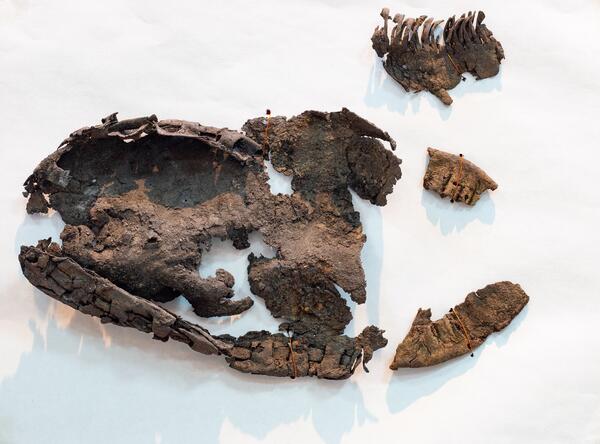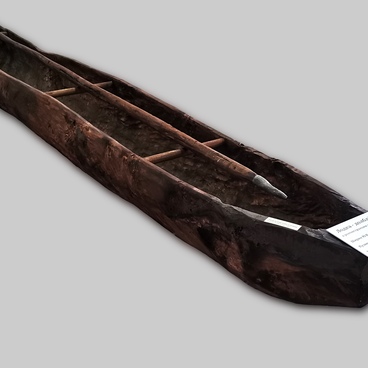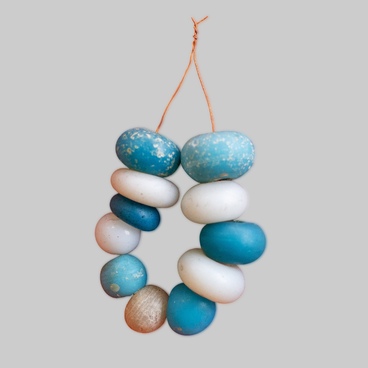Manufacturing of footwear was a robust business in Kuznetsk. During archaeological excavations shoemaker’s tools were found: grinder, piercers, needles, thimble.
One-piece leather-hide shoes (“porshni”) were the cheapest and simplest casual shoes. They had no heels or bootlegs, they were made of tanned or raw hide leather.
By the design, porshni may be divided into three types: simple, open work and compound. To manufacture the first two types of porshni, a rectangular sheet of leather was taken, 2-2,5 cm thick. The length and width of the leather sheet corresponded to the foot size plus the allowance for bootleg height in the toe and heel part of the shoe. The open work porshni were notable for elegance and a more complicated decorative design of the foot front. Its open work design was implemented by making rows of parallel slots. In the middle of each slot straps were inserted and interlaced, tightening the foot front edges. Such porshni resembled sandals though made of a finer and softer material.
Compound porshni were made of two sheets of compact thick leather. The corners of the blank were cut away and an additional element – a triangular leather piece- was stitched in. The heel part was also sewed together manually. Such type of porshni resembled Indian moccasins. The notes of Vladimir Dal contain a description of heir manufacturing method: “Porshni are nor sewn but rather bent from a single sheet of raw leather or skin (with fur) with a threaded ribbon (“vzdyOrka”), cord (“Ochura”) or belt (“remyOnnaya obOra”); usually they are made of horse skin, or better of pork skin, they may be made of seal skin, or others…’ Porshni remained in everyday use until early XX century.
One-piece leather-hide shoes (“porshni”) were the cheapest and simplest casual shoes. They had no heels or bootlegs, they were made of tanned or raw hide leather.
By the design, porshni may be divided into three types: simple, open work and compound. To manufacture the first two types of porshni, a rectangular sheet of leather was taken, 2-2,5 cm thick. The length and width of the leather sheet corresponded to the foot size plus the allowance for bootleg height in the toe and heel part of the shoe. The open work porshni were notable for elegance and a more complicated decorative design of the foot front. Its open work design was implemented by making rows of parallel slots. In the middle of each slot straps were inserted and interlaced, tightening the foot front edges. Such porshni resembled sandals though made of a finer and softer material.
Compound porshni were made of two sheets of compact thick leather. The corners of the blank were cut away and an additional element – a triangular leather piece- was stitched in. The heel part was also sewed together manually. Such type of porshni resembled Indian moccasins. The notes of Vladimir Dal contain a description of heir manufacturing method: “Porshni are nor sewn but rather bent from a single sheet of raw leather or skin (with fur) with a threaded ribbon (“vzdyOrka”), cord (“Ochura”) or belt (“remyOnnaya obOra”); usually they are made of horse skin, or better of pork skin, they may be made of seal skin, or others…’ Porshni remained in everyday use until early XX century.



